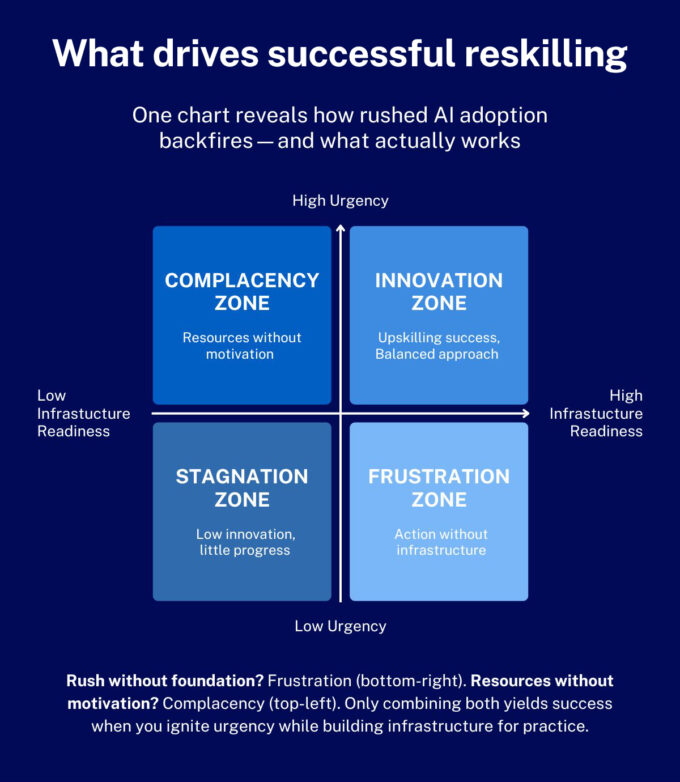From adoption to absorption
All companies can access frontier tech. But not all can turn it into productivity. Seminal analysis by the OECD found a growing gap between top-performing firms and the rest even when access to frontier technologies is broadly the same.
The difference? Leading firms don’t just adopt tech – they absorb it. They have “complementary capabilities”: advanced skills and workforce training, strong management and leadership, modern organizational practices, and access to finance, scale, and networks. These aren’t nice-to-haves; they’re what make the tech work.
Laggard firms often miss those pieces. They may have the same access to technology, but without the capacity to reshape workflows or upskill teams, the benefits stall. Same tech, different outcomes.
Another trap is the absence of robust metrics. By diligently measuring AI’s real-world impact on cycle times, output quality, or customer satisfaction, leaders can ensure they stay ahead of the game. This means benchmarking AI-enabled workflows against traditional processes. Are customer service agents responding faster? Are supply chain forecasts more accurate? Is AI-enhanced personalization driving higher conversion rates?
At global learning company Pearson, CFO Sally Johnson isn’t just talking about AI experiments, she’s also seeing real results. GenAI tools built into the company’s higher education courseware are driving performance where it counts. “For products using those AI study tools, we’ve seen double-digit revenue growth,” says Johnson. “So, it’s making a difference from a commercial point of view, as well.”







